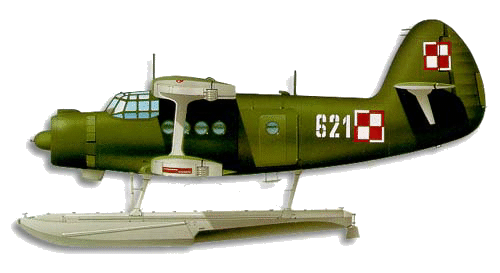|

Antonov An-2 Colt

text by Raul Colon
When the An-2 utility biplane took to the air
for the first time in August 1947, nobody could have predicted that the
aircraft will go on to become one of the most prolific aircraft of all
time. At the end of its impressive production run, nearly 18,000 units
were built. Most of them in the Soviet Union, but some units were built,
under license agreements, in China and Poland. In China alone, 1,000
examples were built between 1957 and 1970. Beside the Soviet Union; Egypt,
North Korea, China and Poland were the primarily users of the An-2
aircraft. When assigned by the Soviet Ministry of Defence for the
development and production of a replacement for the multi-tasked Po-2
aircraft, the Antonov Design Bureau, selected a biplane configuration for
the new plane mainly to provide it with a market advantage during short
take-off operations as well as better low speed capabilities. The
selection of such an antiquated configuration, especially in the advent of
the jet age, caused some members of the Ministry of Defence to question
Antonov’s overall design capability, but the success of the An-2 promptly
silenced those voices. The selection of the biplane configuration was
reached after carefully examining the requirements of the new aircraft.
Low speed manoeuvrability was the primarily requirement for the An-2
operational profile. The An-2 was designed to be used as a multi-task
aircraft capable of providing the Soviet Union’s Air Force with a
reliable, compact aircraft capable of sustaining heavy battlefield damage
while remaining air capable.
The original An-2, NATO codename, “Colt”; design evolved around the light
alloy stressed airframe. Only the tail plane and the aircraft’s control
surfaces were covered in fabric. The Colt was fitted with an oversize
cockpit providing the two men crew with an excellent field of view. The
aircraft was also fitted with a 1’0” window overhang on each side of the
cockpit. The Colt’s center of gravity, caused by the narrowing of the wing
chords, required that the aircraft to be fitted with a larger than usual
tail plane. The Colt, known as the “Little Anna” in Eastern Europe, was
able to carry up to two tons in its internal cargo bay. Due to problems
associated with the An-2’s heavy tail plane, the cargo bay was placed in
the forward-mid section of the aircraft. No cargo stored in the tail end
of the plane for this reason. A large, upward-hinged door was installed on
the portside of the fuselage for cargo loading. Inside the cargo door was
an inward-opening door used for passenger loading. Up to twelve passengers
were able to fit in the aircraft. An extended nose cone housed one
Shvestsov ASh-621R nine cylinder, air-cooled radial engine capable of
generating 1,000hp. An 11’-10” V509a propeller with four scimitars like
blades was original installed on the Colt. Later versions were fitted with
an 11’-0” four straight blade configuration. The An-2 was manned by a two
men crew. A pilot and a flight engineer seated side-by-side.
The Colt was fitted with a fixed undercarriage plus a tail wheel
structure. Several An-2s were modified to use skis or float configuration.
Although the aircraft was originally designed for military utility duties,
the Colt was primarily use as a multi purposed agricultural aircraft. The
Colt entered front line service with the Soviet air force in the summer of
1948. It immediately became the force’s primay utility aircraft. The
Soviet owned airliner Aeroflot was the other main user of the Colt. Over
the years there were several versions of the “Little Anna”, one of them,
the Fedya, was use as a spotter aircraft by the Soviet Army. The Fedya or
An-2F was fitted with a new rear fuselage section for tactical
observations. A .5” machine gun was installed as a defensive weapon. The
other main version of the Colt was the An-2ZA Atmosphere research
Airplane. The 2ZA had a heated compartment installed on the middle of the
airframe for scientific experimentation. The 2ZA was fitted with a
turbocharger in its engine in order to augment it operational ceiling from
14,415’ to 31,170’.
Later on in its production run, a turboprop version of the Colt arrived.
Designated the An-3, the new Colt was not as successful as the An-2 and
never replaced the original version. The whole An-3 programme was
abandoned shortly after the first unit was completed. Since late 1959, the
PZL-Mielec in Poland was the main production facility for the Colt. When
the Cold War ended, Russia took hold of the largest operational An-2 fleet
in the world. Today, the Russian Air Force uses around three hundred Colts
in various agricultural and transport duties; thus making the An-2 one of
the longest service aircraft of all time.

|
Origin: |
USSR |
|
Type: |
14-seat
transport and general utility aircraft |
|
Max Speed: |
139 kt / 160
mph |
|
Max Range |
900 km / 559
miles |
|
Dimensions: |
span upper
18.18 m / 59 ft 7.7 in, lower 14.24 m / 46 ft 8.6 in
length 12.74 m / 41 ft 9.6 in
height 4.00 m / 13ft 1.5 in |
|
Weight: |
empty 3,450 kg
/ 7,606 lb
maximum take-off 5,500 kg / 12,125 lb |
|
Powerplant: |
one 746 kW /
1,000-hp PZL Kalisz (Shvetsov) ASz-62IR radial piston engine |
|
Armament: |
none |
|
